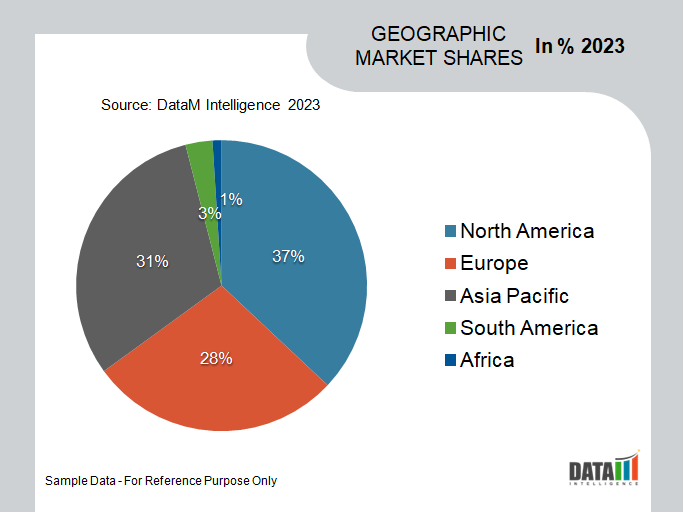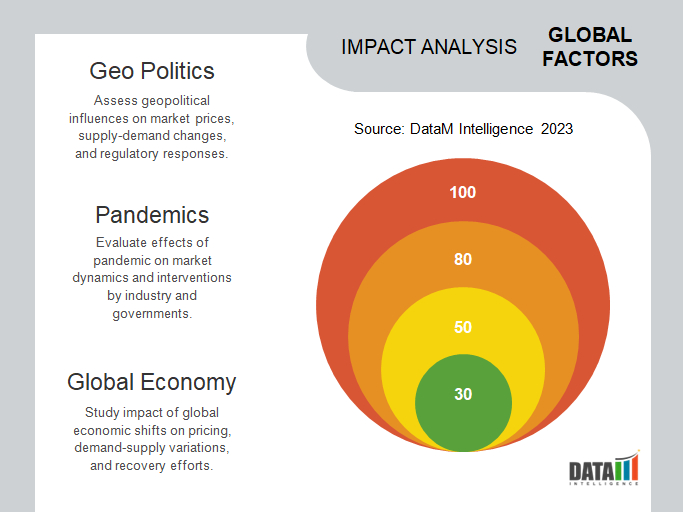Global Open Database Connectivity (ODBC) Market is segmented By Operating System (Windows, macOS, Linux, Others), By Driver (Multi-Tier ODBC Driver, Single-Tier ODBC Driver), By Deployment (Cloud, On-Premise), By Application (Marketing and Collaboration, Big Data and NOSQL, File and API, Accounting, E-Commerce, Others), By End-User (Manufacturing, BFSI, Government, IT and Telecommunication, Electronics, Healthcare, Automotive, Others), and By Region (North America, South America, Europe, Asia Pacific, Middle East, and Africa) – Share, Size, Outlook, and Opportunity Analysis, 2024-2031
Report Overview
Global Open Database Connectivity (ODBC) Market reached US$ 1.2 billion in 2022 and is expected to reach US$ 4.7 billion by 2030, growing with a CAGR of 19.1% during the forecast period 2024-2031.

The market serves the manufacturing, retail, healthcare, finance and other sectors where effective data integration and connection are essential for running businesses and making decisions. The market is impacted by developments in database technology and is driven by the growing demand for seamless data access across various database platforms.
Presence of global manufacturers like Microsoft in the region augments the market growth in the North America. For instance, Deployments can access data from a number of database management systems (DBMSs) via the Microsoft Open Database Connectivity (ODBC) interface, which is an interface for the C programming language. A low-level, high-performance interface created especially for relational data systems is designated as ODBC.
Through a single interface, an application can access data in many DBMSs, enabling maximum interoperability. Additionally, that program won't depend on any DBMS to access data. Drivers serve as the interface between a program and a particular DBMS and users of the application can add these software components. Therefore, above mentioned factors drive the growth of U.S. market and is acoounting for majority of the market shares.
Market Summary
|
Metrics |
Details |
|
CAGR |
19.1% |
|
Size Available for Years |
2022-2031 |
|
Forecast Period |
2024-2031 |
|
Data Availability |
Value (US$) |
|
Segments Covered |
Operating System, Driver, Deployment, Application, End-User and Region |
|
Regions Covered |
North America, Europe, Asia-Pacific, South America and Middle East & Africa |
|
Fastest Growing Region |
Asia-Pacific |
|
Largest Region |
North America |
|
Report Insights Covered |
Competitive Landscape Analysis, Company Profile Analysis, Market Size, Share, Growth, Demand, Recent Developments, Mergers and Acquisitions, New Equipment Operating System Launches, Growth Strategies, Revenue Analysis, Porter’s Analysis, Pricing Analysis, Regulatory Analysis, Supply-Chain Analysis and Other key Insights. |
For more details on this report - Request for Sample
Market Dynamics
Versatility and Growing Significance of ODBC in Database Management
Although the initial ODBC product was released by Microsoft, the SQL Access Group really built and released it. The Open Group standard SQL (structured query language) Call-Level Interface (CLI) is actually used by it as a standard for accessing the data, making it independent of any operating system or database management system. It also complies with ISO/IEC.
No matter which interfaces the targeted databases use, ODBC enables programs to use SQL requests to query databases since it can translate the request into a call that the database can interpret. Because of this, it can be extremely beneficial for companies that use and manage numerous databases or apps. The data source could be located in the cloud, on a different system within the company's network or on the same system as the application. These reasons significantly contribute to the growth of the global ODBC market.
Data Enrichment Using Open Database Connectivity (ODBC) and Improving the Effectiveness of Data Analysis
Multiple database management systems (DBMS) can be managed using the standard interface known as ODBC. With reference to Big Data, the ODBC idea gives organizations access to several external data sources. Organizations can easily access the data by querying these sources. Through a connected ODBC driver manager, which transmits the query to the DBMS, drivers serve as a translation layer between the application and DBMS.
Additionally, It is possible to obtain market data more easily and rapidly with the help of ODBC solutions, which may quickly and easily provide you access to data from hundreds of external databases. Any organization can gain from higher productivity owing to the hundreds of publicly available information sources at its command. Hence, these benefits supplement the market growth.
Growing Data Security Problems
An important factor in deciding whether to accept and utilise this technology is the growing data security risks associated to ODBC. Databases can be accessed through ODBC connections, however if these connections are not properly secured, unauthorised access may be possible. This might lead to sensitive data theft, unauthorised data alteration or data breaches. Strong authentication and authorisation procedures must be implemented in ODBC connections to guarantee that only authorised users or applications can access the databases.
With the growing global expansion of the digital technologies, the ODBC market is now more vulnerable to the cyber attacks and threats. Therefore, hackers are continously developing the new techniques to exploit the vulnerability in the open database systems, which puts the data at risk. As a result, the threat of cyber attacks increasing the expanses of the companies to execute better security measures, which potentially hampers the growth of the ODBC market.
Market Segmentation Analysis
The global open database connectivity (ODBC) market is segmented based on operating system, driver, deployment, application, end-user and region.
Multi-Tier ODBC Architecture Leads to the Segmental Dominance
Multiple-tier ODBC drivers are used in this ODBC architecture. This architecture is typical and is built on client-server communication. In an ODBC multi-tier architecture, the server receives ODBC requests from the application and processes them before passing the SQL statements to the database system. Oracle and SQL server are the type of multi-tier ODBC driver.
Multi-tier driver is useful for client-server architecture which enhances the performance and the scalability. These drivers is useful in handling the larger workloads and adjust more connections. Manufacturers like microsoft and others are also focsuing on the development of the drivers through optimization and other advanced techniquies. These advancements ensures the efficiency of the data processing and retrieval, which leads to the user increased adoption. As a result, the multi-tier ODBC driver dominates the global market for ODBC with more then half of the segmental share.
Market Geographical Share
North American ODBC Market Thrives with Strong Presence of Technology Giants

North America is home to the world's largest technology companies and many early adopters of new technologies, making it a leading market for cloud solutions. The region has a well-established IT infrastructure, many technically skilled personnel and a high adoption rate of cloud services.
North America has a high adoption rate of cloud services, which drives the demand for ODBC solutions. The region is home to some of the world's largest technology companies, which are major players such as Microsoft and others in the ODBC market. Therefore, North America dominates the global ODBC market with significant global market share.
Market Companies
The major global players include CData Software, Inc, Devart, MariaDB, Microsoft, Oracle, IBM Corporation, SAP, Databricks, Progress Software Corporatione and Skills and Services GmbH.
COVID-19 Impact On Market
The global ODBC market has been significantly impacted by COVID-19. The epidemic has increased the demand for cloud-based solutions, especially cloud market, by accelerating the shift to online commerce and remote workers. The need for cloud-based services like collaboration tools, online storage and virtual meetings has surged as more people choose to work remotely. Due to the need of companies to manage and automate the deployment and scaling of these resources, the use of cloud solutions has expanded.

AI Impact
The artificial intelligence has an significant impact in the global open database connectivity market. This has helped ODBC market to evelove continously. AI has played an crucial role in improving the data processing capabilities in the ODBC market. AI alogorithm can analyze or observe the large amounts of data quicly and with much better efficiency.
AI can improve the performance if the databases and it also offers the data integration and data warehousing in a good manner. It helps in strengthening of the intelligent data security. Therefore, AI has an revolutionary impact in the data processing, analytics and data security.
By Operating System
- Windows
- macOS
- Linux
- Others
By Driver
- Single-Tier ODBC Driver
- Multi-Tier ODBC Driver
By Deployment
- Cloud
- On-Premise
By Apllication
- Marketing and Collaboration
- Big Data and NOSQL
- File and API
- Accounting
- E-Commerce
- Others
By End-User
- Manufacturing
- BFSI
- Government
- IT and Telecommunication
- Electronics
- Healthcare
- Automotive
- Others
By Region
- North America
- U.S.
- Canada
- Mexico
- Europe
- Germany
- UK
- France
- Italy
- Russia
- Rest of Europe
- South America
- Brazil
- Argentina
- Rest of South America
- Asia-Pacific
- China
- India
- Japan
- Australia
- Rest of Asia-Pacific
- Middle East and Africa
Key Developments
- In April 2023, For operating mission-critical MongoDB workloads, Amazon DocumentDB (with MongoDB compatibility) offers a scalable, extremely resilient and fully managed database service. Microsoft Excel and PowerBI can connect to Amazon DocumentDB clusters using a new ODBC connector that wasrecently revealed by Amazon DocumentDB. Anyone can now query and view data saved in DocumentDB from programmes that support ODBC access using the ODBC connector.
- In Jaunary 2023, After installing the November 2022 Patch updates, Microsoft has resolved a known issue affecting Windows programmes using ODBC database connections. This problem affects both client and server versions of Windows, including versions as recent as Windows 11 and Windows Server 2022 and Windows 7 SP1 and Windows Server 2008 SP2.
- On February 9, 2021, Dremio, a pioneer in the field of data lake transformation, has just announced that it will support Apache Arrow Flight, a technology for open source data networking that Dremio co-developed and that significantly boosts data transfer rates. Client applications may now interact with Dremio's data lake service more quickly than they could in the past by using technologies like Open Database Connectivity (ODBC) and Java Database Connectivity (JDBC), which are over ten years old.
Why Purchase the Report?
- To visualize the global open database connectivity (ODBC) market segmentation based on operating system, driver, deployment, application, end-user and region, as well as understand key commercial assets and players.
- Identify commercial opportunities by analyzing trends and co-development.
- Excel data sheet with numerous data points of open database connectivity (ODBC) market-level with all segments.
- PDF report consists of a comprehensive analysis after exhaustive qualitative interviews and an in-depth study.
- Product mapping available as Excel consisting of key products of all the major players.
The global open database connectivity (ODBC) market report would provide approximately 72 tables, 83 figures and 242 Pages.
Target Audience 2024
- Manufacturers/ Buyers
- Industry Investors/Investment Bankers
- Research Professionals
- Emerging Companies